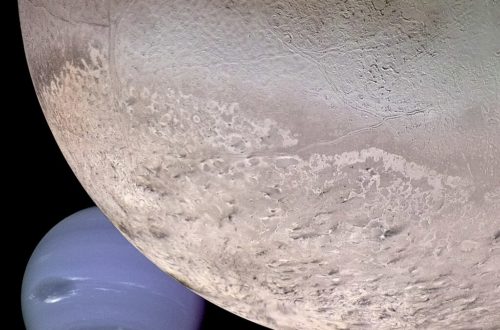Remote Sensing Satellite Data & Tools: Active, Passive, Microwave

Types of Remote Sensing Satellite Data: Tools and Indices
Remote sensing technologies have been a part of our daily lives for decades now. Maps and navigation depend on remote sensing satellite data; weather forecasting would not be possible without it either. Keeping track of any natural anomalies like fires and floods also happens with earth sensing satellites. Remote sensing tech keeps improving every day; for example, EOS Data Analytics and Dragonfly Aerospace are working on a new sensing and imaging tech that should take commercial agriculture to a new level. But what is remote sensing tech really about? Read a brief overview of remote sensing types below.
Active Remote Sensing
Active remote sensing implies that any tools involved in this process can emanate light or waves of their own. In contrast to that, passive remote sensing relies on other objects reflecting light or waves (more about that later). Several instrument types do the active remote sensing, i.e.:
- Radar: perhaps, the most old-school remote sensor on this list, radar uses an antenna for emitting impulses. Whenever these remote sensing impulses come across an obstacle, part of them scatters back to the original source. As a result, one can estimate how far and where the target (or an obstacle) is. This figure is calculated based on the amount of returned impulses.
- Lidar: lidar sends out light impulses and uses them to measure the distance to other objects. Like radar, this tool measures the retrieved quantity, multiplying the time by the speed of light.
- Laser altimeter: can estimate elevation using lidar tech.
- Ranging instruments: these send sensing signals to the identical devices to measure their range.
- Sounder: is a tool to study weather. It emits vertical impulses to measure temperature, humidity levels, precipitation, etc.
- Scatterometer: this device measures radiation by sending impulses of its own and analyzing the returned result.
One of the greatest advantages of using active remote sensing tools is that they are relatively independent. Since they emit signals of their own, they can function without natural sunlight and are comparatively independent when it comes to atmospheric fluctuations.
Today, active remote sensing is used not only for scientific research but also for more practical purposes. For example, the Shuttle Radar Topography Mission collects data on our planet’s elevation levels. Lidar helps model the Earth’s surface. Data obtained with satellite remote sensing helps foresters and marines organize rescue missions. And, of course, sounders are essential to weather monitoring and forecasting.
Passive Remote Sensing

Passive remote sensors cannot emit signals or light of their own, so they depend on natural energy (usually, sunlight) bouncing off the target. Simply put, these sensors can only be used during the day when there are enough sun rays to reflect. Passive remote sensing system tools employ multispectral or hyperspectral sensors that measure a wide array of parameters. They analyze the bounced sunlight by band combinations. The latter may differ by the number of channels (two or more). And even though passive remote sensors depend on sunlight, the waves they measure are outside the human scope of visions.
The most useful instrument for passive remote sensing are:
- Spectrometer for analyzing spectral bands
- Radiometer to measure visible, infra-red, or microwave bands and establish the level of radiation
- Spectroradiometer to determine the level of radiation in several band ranges
- Accelerometer to measure any changes in speed
- Imaging radiometer to scan surface objects and reproduce their images
- Hyperspectral radiometer to differentiate between narrow spectral bands. This is the most precise passive tool to date.
While it may seem that passive instruments are not as versatile as active tools, they are still very useful in our daily life. For starters, remote sensing examples in the passive category can really stand the test of time — take Landsat, for instance. It remains the longest earth-observing mission that has already helped us see our planet’s changes for the last forty years. Passive tools are widely used in forestry, mapping, ecology, and other areas. Commercial agriculture relieves heavily on remote sensing satellites and their spectral indices for yield forecasting.
Microwave Remote Sensing
Microwave sensors can be both active and passive. Here, the emphasis is on the wavelength that may vary from 1cm to 1m. The longer the wave is, the easier it is for the wave to break through atmospheric conditions like clouds or rain.
Passive sensors check wave emissions from specific targets. The main passive remote sensing application is monitoring our planet’s condition — for example, oil spills in marine water or ozone levels in the air.
Active microwave sensors can emit signals of their own. These tools can be imaging (like radars) or non-imaging (like scatterometers or altimeters). This tech is most often used in marine studies and meteorology.
As you can see, the number of remote sensing techniques is already impressive. What’s more, these technologies keep moving forward, so we should soon have an even better understanding of our planet and its resources.
Would you like to receive similar articles by email?





